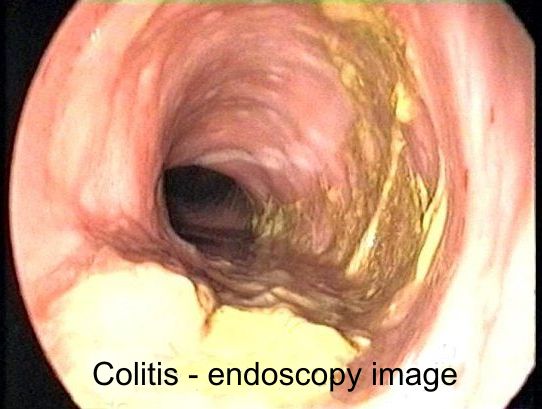Proposed treatment for IBD in Dogs
The successful long-term treatment of IBD cases, which to-date have proved unsatisfactorily treatable, was substantiated by means of a clinical study of systematically processed cases. This does not claim to be scientifically comprehensive. The author, however, recognises this as a truly simple and effective concept of treatment for the often undetected cases of IBD, which make up approximately 30 per cent of chronic recurrent diarrhoea in the dog.
A questionnaire has proved successful, through which the major anamnestic and clinical symptoms are collated.
This is followed by a pragmatic diagnostic and therapeutic course of action, which has shown pleasing results in practice:
A Rectal examination and where appropriate, endoscopy to rule out tumours, e.g. polyps, giardia (ELISA faecal examination) and other parasites.
B Biopsies of the large intestine usually required are “unfortunately” relatively laborious and in the main nosological, non-specific and hence irrelevant in the experience of our Practice.
C Increased content (>5 μg/ml serum) of validated canine highly sensitive but non-specific C reactive protein (CRP) together with a typical case history essentially substantiates IBD of the large intestine. IBD of the small intestine usually does not show increased CRP.

A simple initial treatment has achieved prolonged freedom from symptoms in many cases, which had been predominantly unsuccessfully treatable to-date.
The treatment consists of 0.2 mg/kg Dexamethasone, as well as approx. 25 mg/kg Sulfasalazine (Azulfidine, ®Pfizer) three times a day to regulate the mucosa-associated lymphoid tissue (MALT) for six weeks initially. In addition to this, a strict (!) elimination diet must be adhered to of exclusively approx. 1.2% of the body weight in IBDerma-Hyposens (Lupovet ®).
This treatment is being well accepted and leads to a very good general state of well-being. This aspect is particularly important with regard to the administration and duration of the exclusive feeding regime.
IBDerma-Hyposens is to be fed exclusively with fresh water in conjunction with unlimited fresh vegetables (any type) plus it is highly recommended to add unusual sources of protein, such as goat, mutton, horse meat or green beef tripe.
Hydrolyzed cassava root flour added to home cooking constitutes a suitable carbohydrate source for the diet. Dehydrated meat chunks (Lupovet) or gluten free snacks can be used as titbits.
Absolutely forgo any cereal-based products. To avoid endangering prolonged success, abstain completely from using other sources of carbohydrate (cereals, bran, pasta, potatoes, titbits containing cereal, sausage meat, wet food containing sausage meat). Once triggered, “bowel crises” can cause a string of reactions, which can last weeks.
In doing so, you can absolutely avoid very expensive medication, often accompanied by side effects, for example prolonged use of corticoid steroids, antibiotics (high doses of Sulfasalazine, Cyclosporine A or Azathioprine etc.).
In our extensive experience, 30 per cent of patients can manage completely without medication by undergoing a strict (!) regime with IBDerma-Hyposens. The other 70 per cent only require permanent administration of 25 mg/kg Sulfasalazine (Azulfidine), divided in three parts a day (all 8 h) in the initial six weeks of treatment in order to achieve prolonged freedom from symptoms. After this initial period a sustained dose of approx. 6 mg/kg can be administered if required.
Consistent compliance is a vital prerequisite for prolonged success with this treatment. In our opinion this is maintained without exception due to the difficult and traumatic experiences of the owner. All things being equal, follow up consultations are only required two or three times per annum in order to check CRP (regulation of the Azulfidine dose) and to update monitoring information.
|